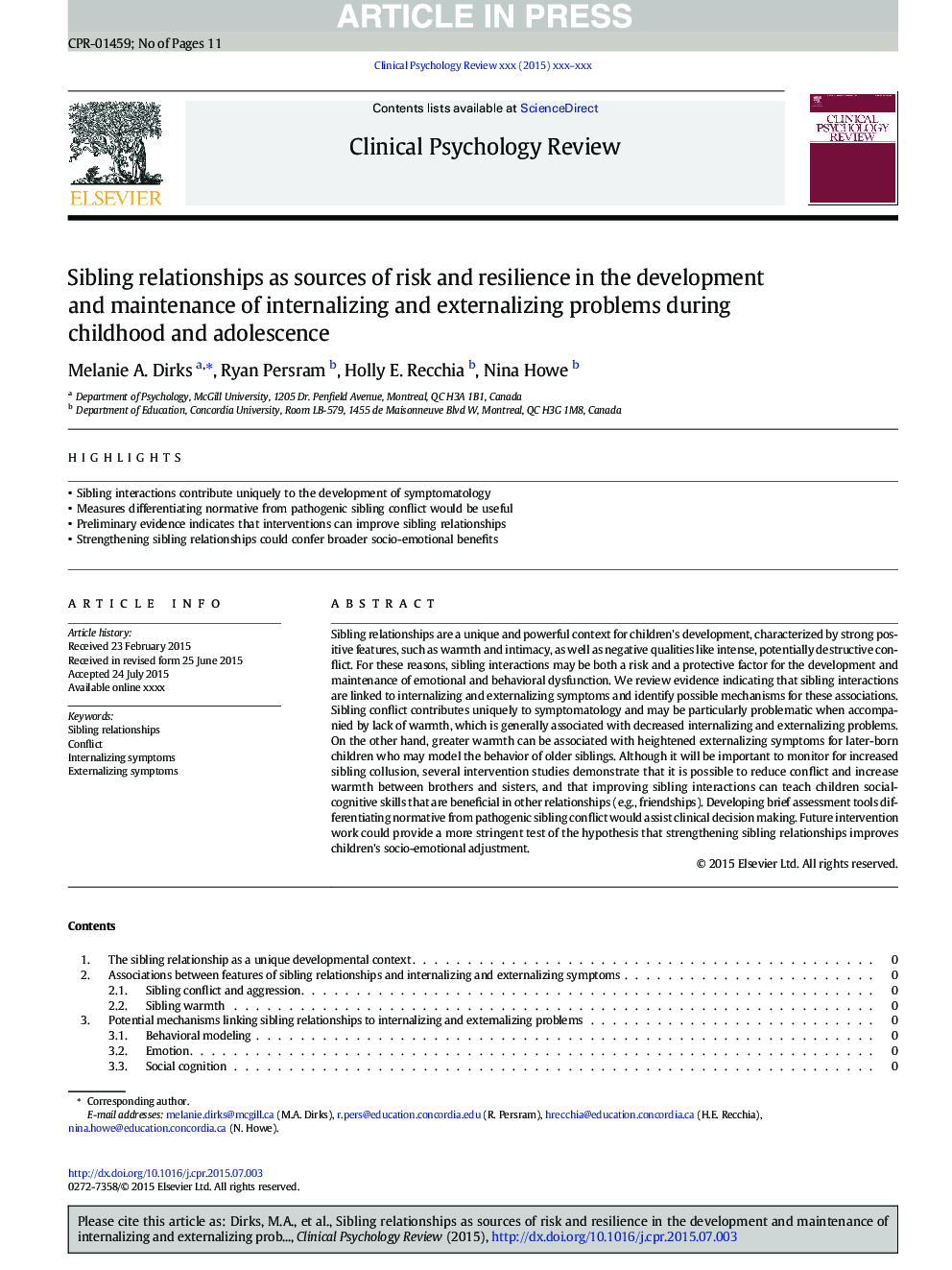| Article ID | Journal | Published Year | Pages | File Type |
|---|---|---|---|---|
| 7263980 | Clinical Psychology Review | 2015 | 11 Pages |
Abstract
Sibling relationships are a unique and powerful context for children's development, characterized by strong positive features, such as warmth and intimacy, as well as negative qualities like intense, potentially destructive conflict. For these reasons, sibling interactions may be both a risk and a protective factor for the development and maintenance of emotional and behavioral dysfunction. We review evidence indicating that sibling interactions are linked to internalizing and externalizing symptoms and identify possible mechanisms for these associations. Sibling conflict contributes uniquely to symptomatology and may be particularly problematic when accompanied by lack of warmth, which is generally associated with decreased internalizing and externalizing problems. On the other hand, greater warmth can be associated with heightened externalizing symptoms for later-born children who may model the behavior of older siblings. Although it will be important to monitor for increased sibling collusion, several intervention studies demonstrate that it is possible to reduce conflict and increase warmth between brothers and sisters, and that improving sibling interactions can teach children social-cognitive skills that are beneficial in other relationships (e.g., friendships). Developing brief assessment tools differentiating normative from pathogenic sibling conflict would assist clinical decision making. Future intervention work could provide a more stringent test of the hypothesis that strengthening sibling relationships improves children's socio-emotional adjustment.
Related Topics
Health Sciences
Medicine and Dentistry
Psychiatry and Mental Health
Authors
Melanie A. Dirks, Ryan Persram, Holly E. Recchia, Nina Howe,
